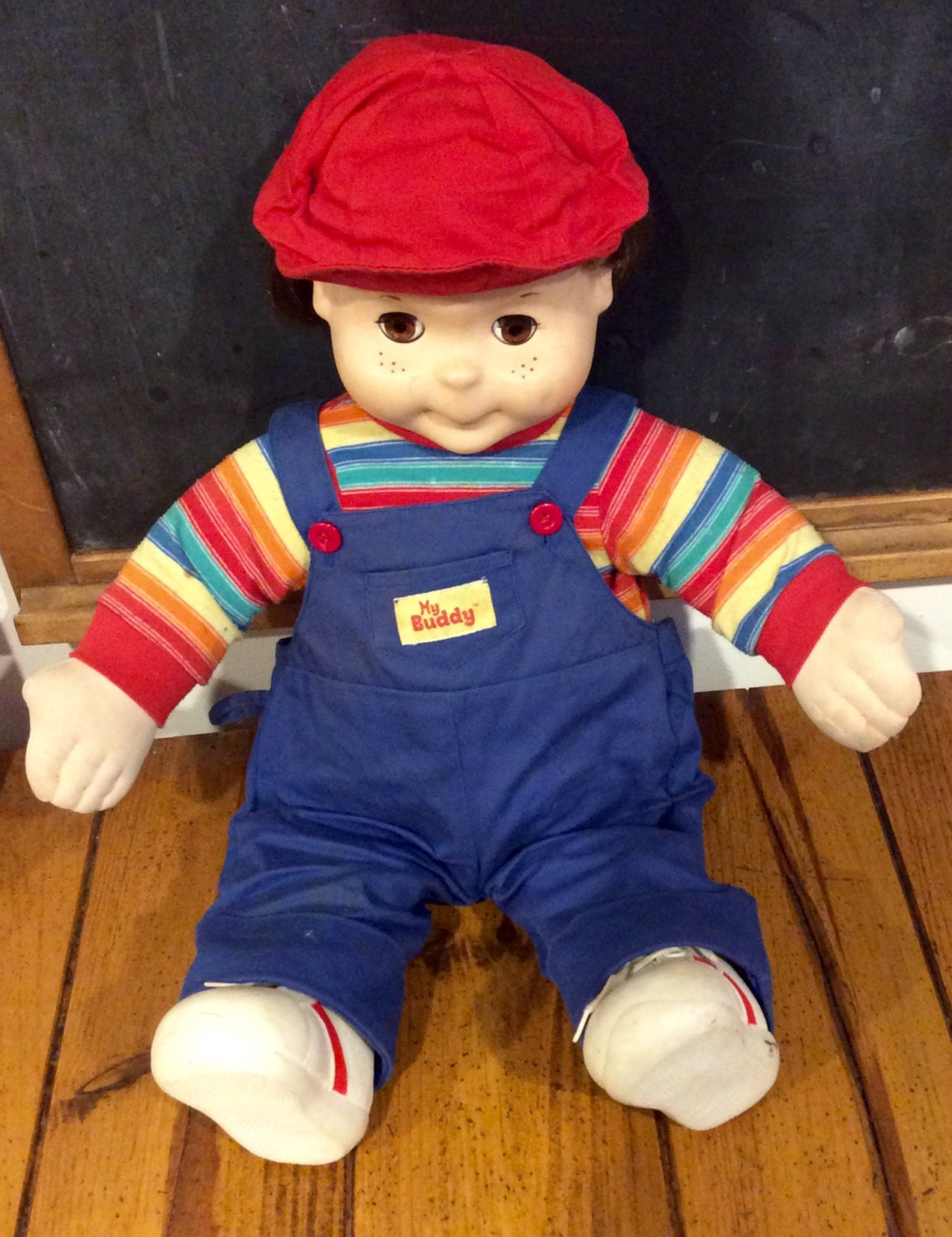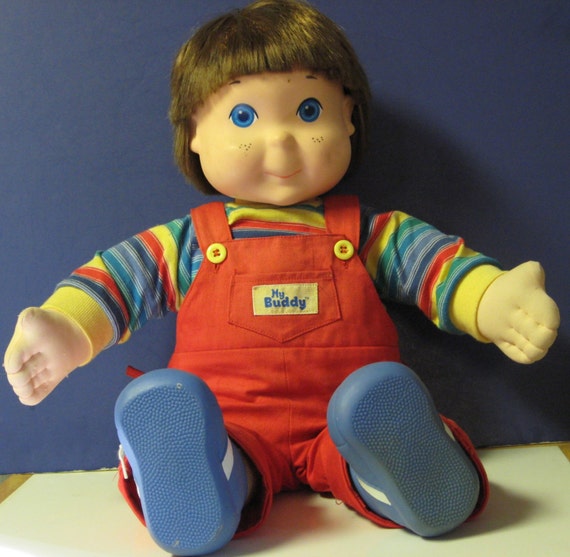

Hasbro subsidiary Playskool continued manufacturing My Buddy into the 1990s. My Pet Monster, a plush toy for boys, came and went. Mattel’s She-Ra line, an action figure spin-off of He-Man targeted toward girls, failed to take off. Despite Hasbro’s hopes, My Buddy failed to signal a breakdown in gender-specific toys. My Buddy, with his largely pacifistic persona, invited no such confrontations. The doll market for boys was mostly relegated to Wrestling Buddies, a line of WWE-themed stuffed companions that encouraged boys to drop elbows and grapple them to the floor. My Buddy and his various offshoots-there was a Kid Sister-hung on for a few years before disappearing from shelves. With his big, goggling eyes, he is half winsome, half bruiser.” Hillier went on to express doubt that a boy would find the prospect of dressing the doll in his own retired baby clothes enticing. Los Angeles Times columnist Bevis Hillier called My Buddy “an unprepossessing creature who also has overalls and freckles but has managed to get his cap on the right way round. If boys did not find fault with playing with dolls, some adults did, expressing puzzlement that My Buddy would hold appeal for the blood-and-guts dominion of the boys toys market. Joe, My Little Pony, and My Buddy, which ranked eighth on the list.
My buddy doll Patch#
While Cabbage Patch Kids remained a goliath, Hasbro had four of the top 10 bestselling toys on the market: Transformers, G.I. Hasbro’s intent was easily discerned through ad copy: “A little boy’s special friend! Rough and tough, yet soft and cuddly.”Īmid a competitive toy year, the $25 My Buddy fared well in 1985. He was simply there to accompany his human on adventures. Unlike other toys with complex personal narratives, My Buddy possessed no agency. We didn’t position it like a girl doll, soft and sweet.”Įxcited by the potential, Hasbro backed My Buddy with an effective ad campaign led by an infectious song: We show them climbing up trees, riding their bikes.

“My Buddy is positioned as macho,” Hasbro's senior vice president of marketing Stephen Schwartz told The Boston Globe in 1985. Clad in durable overalls, My Buddy seemed designed for extended trips through dirty terrain. My Buddy was intended to be a companion for boys perceived as more active than girls, canvassing neighborhoods on Big Wheels, clutching My Buddy as they climbed into tree houses, and possibly making him an inadvertent object in a game of touch football. With My Buddy, Hasbro banked on the doll’s heft-at an imposing 23 inches, it was a fair bit larger than the Cabbage Patch line-to ensnare juvenile consumers. Though Joe would go on to inhabit smaller, molded plastic sculpts in the 1980s, the idea of boys playing with plush toys was still of interest. Joe, a line of 12-inch, fabric-outfit military figures intended to do for boys what Mattel’s Barbie had done for the female demographic. Hasbro reversed that trend in 1964 with the introduction of G.I. As time went on and manufacturers began focusing on dolls resembling infants, interest on the part of young male consumers began to trail off. The difference was that the dolls were often depicting adult men and women. As far back as the early 20th century, boys played with dolls regardless of whether the toys were marketed specifically toward them or not.

The idea was not totally alien to the market. In marketing My Buddy, Hasbro hoped to pioneer a new toy category: a doll line for boys. The Cabbage Patch dolls were highly desirable among young girls boys gravitated toward the veiny, sword-wielding characters of the He-Man franchise.

Then there was My Buddy, which seemed to straddle the gender lines the other major toy companies had drawn. Masters of the Universe was Mattel’s hit, with both the action figures and ancillary products doubling the take of the Cabbage people. Coleco’s Cabbage Patch Kids were a bona fide phenomenon, ringing up $540 million in sales the year prior. In 1985, toy stores were stocked to the brim with some of the most indelible properties of the decade. That was the case for My Buddy, an oversized doll first introduced by Hasbro in 1985 that failed to make waves on store shelves but informed the creation of the carrot-topped spree killer doll Chucky in writer Don Mancini and director Tom Holland’s 1988 film Child’s Play.
My buddy doll series#
If your toy company's boy-oriented doll doesn’t set the world on fire, you might take comfort in the fact it partially inspired a series of slasher movies.


 0 kommentar(er)
0 kommentar(er)
